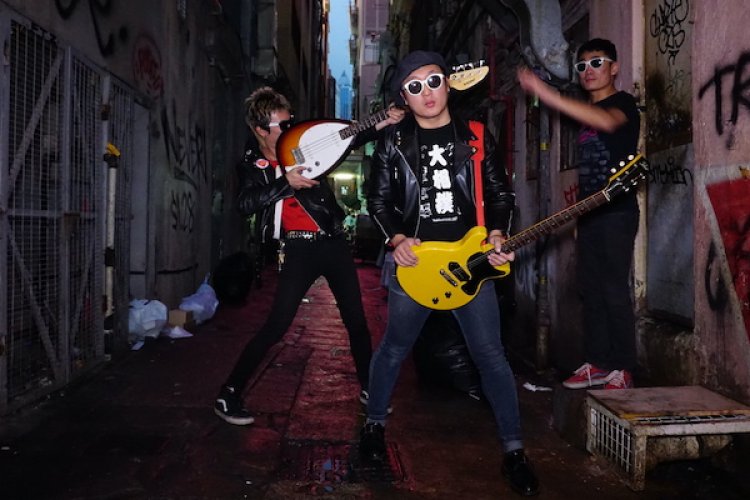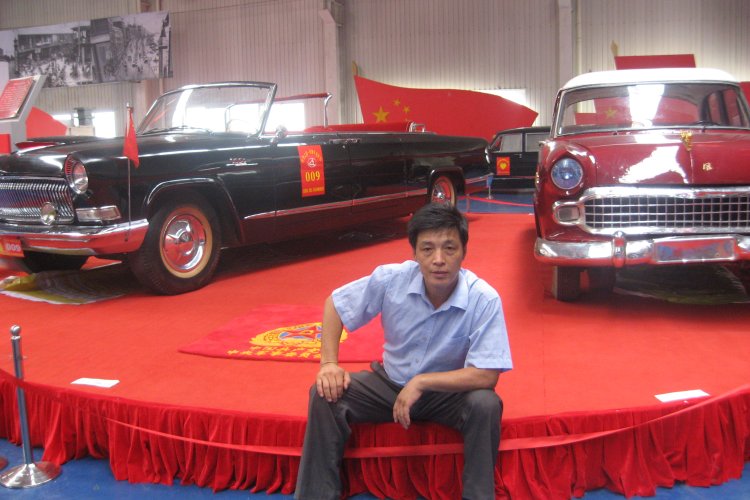Well Red: Crystal Bell of Red Gate Gallery’s Residency Program
The Red Gate Gallery, China’s first private contemporary art gallery, was founded by Brian Wallace in 1991, after he had spent eleven years in China. Located in the old Ming dynasty watchtower at Dongbianmen, Red Gate Gallery is widely recognized as a pioneer in China’s dynamic and ever-evolving contemporary art scene.
For the past eighteen years, Red Gate has engaged and promoted Chinese artists through exhibitions and cultural exchanges. Its vibrant international artist residency program, established in 2001, plays an important role in the Gallery’s mission, providing artists, curators, writers and academics with the opportunity to live and create in China.
Crystal Bell, Red Gate Gallery’s redheaded residency program director, tells Agenda about the program, Other People’s Property and abandoned castles.
When, why and how was the Red Gate residency program started? How did the idea evolve and turn Red Gate from just a gallery to what it is today?
The residency program has been going on for about ten years on a not for profit model. As curator of one of the most up and coming galleries in the city, Brian had already been spending a lot of time and energy giving advice about the arts scene to Australian artists who came to Beijing, and eventually he realized it was a service he could offer more formally. It started out as a single studio, and we now have six studios in Beigao and four downtown apartments to offer artists wanting to come and create in Beijing.
What kinds of artists does the program attract?
We have artists from every continent working in every medium, of all ages, and with varying levels of experience. For example, we currently have some recent graduates, but have also had a 67 year old PhD student join us. The range is huge; from academics to choreographers, although the most popular mediums remain the visual arts.
Who can do it? Do you have to be a professional artist?
You don’t have to be a professional, but we do ask to see a portfolio of successfully completed projects and an in-depth project proposal for what our artists want to achieve while they’re with us.
How and why does an open studio concept work?
Open studios are structured in an informal setting with the intention of making the creative process accessible to our visitors. Artists open their doors, and invite the community to see the projects they have been working on. It’s a unique way to see the creativity in its “natural habitat,” with some of the works still in progress. Unlike in a gallery setting, our studios allow visitors to meet the artist, see the process and ask questions. It’s about interaction as much as it’s about art. And there’s always a good barbecue!
How did you get involved?
I contacted Brian because I was interested in moving to China to get involved in its arts scene. At first I was volunteering as residency program coordinator, but have recently been hired to do the job full time. Red Gate Gallery has provided a really valuable and supportive environment for me.
What does your role as a residency director involve?
Everything! Originally, I was doing everything from figuring out how to unclog showers to finding the closest framer or locating materials. Now, my role has more to do with connecting artists to translators, galleries and supply shops, and coordinating events, scheduling, managing marketing and nurturing the artists’ community.
Tell us about your own projects.
I have been working on a few Beijing-based projects, including trading homemade cupcakes from the back of my mint green pedicab. We trade for literally anything we like. It’s intended to raise questions about consumerism, cultural imperialism, evangelism, and nationalism, but mainly it’s a really great way to make friends, practice my Chinese, and get some fascinating reactions.
How do you see Beijing’s art scene evolving?
It’s experienced a giant commercial boom in the last ten years or so, and it’s just now coming down from the hype of all that. There are lots of opportunities to do interesting things now that the world is looking. I’m hoping it will be able to emerge from the commercial scene and do something remarkable and exciting.
What are your favorite galleries in Beijing?
Aside from us, I love Arrow Factory. The space is artist run, super open-minded to crazy ideas, and has an amazing location right in the middle of a diverse hutong near Yonghegong.
Do you have a favorite piece or exhibition of all time?
I would have loved to see Song Dong’s exhibition called Waste Not. He’s a Chinese contemporary artist, and the project was about his mother’s hutong. He carefully organized her and everything she had hoarded over the years into a beautiful and thoughtful installation.
I keep the installation in mind as I learn more about Beijing. Even though I am crushed that I didn’t get opportunity to see it, I feel like it had a real relevance to the Beijing I have experienced.
When and why did you decide that Beijing was the place to be?
The Beijing art scene captivated my interest; the idea of a contemporary arts community that’s only been active in last 30 years makes it a really unique platform. When I was studying Chinese contemporary art, there was a lot coming from the Cultural Revolution’s emergent generation.
The new generation of Chinese artists didn’t live through the Cultural Revolution, so it tends to have a completely different style; it’s really fascinating to be in the art scene as it evolves.
What are your favorite things about Beijing?
Without doubt my favorite thing about this city is an abandoned theme park that I found a while back. It’s been abandoned for about 8 years, and is now surrounded by cornfields. I’ve explored an abandoned CCP-built theme park in the USA, but this one’s totally different. Its barren, half built and has an incredible castle set next to the mountains.
Where are your favorite hangouts?
Any ol’ dumpling spot will do, and hot pot in the winter. I also like crashing hotel pools, but those names are top secret. I do like getting some work done at the Bookworm or Waiting for Godot. When meeting friend for a drinks I enjoy Apothecary and Mao Mao Chong.
What would be included in your perfect day out in Beijing?
A bike ride, a trip to Tuanjiehu park, some sort of lesson from an old Chinese person- calligraphy, roller skating, kite flying, or dancing- and then rounding up a bunch of friends for more cycling and exploring, probably finishing up with a three kuai beer on the street between the Drum and Bell Tower.
What can we expect from a visit to an open studio?
Our Open Studios are a great opportunity to take your time and discuss projects with the artists over a beer and barbeque. There’s no pressure to buy anything, maybe just make a few new friends and witness some people’s creative adventures in Beijing.
The next open studios will be held on November 28th from 2-6pm at the Beigao Studios (Shangrila). A map and directions will be available on the Red Gate website. Contact Liao on 13661055125 for directions on the day of the open studios.
Apothecary Tue-Sun 6pm-late (kitchen closes 1am). 3/F, Nali Patio, 81 Sanlitun Beilu, Chaoyang District. (5208 6040) 朝阳区三里屯北路81号那里花园3层
Arrow Factory 38 Jianchang Hutong (off Guozijian Jie), Dongcheng District. www.arrowfactory.org.cn 箭厂胡同38号(国子监街内
Bookworm Daily 9am-2am. Courtyard 4, Gongti Beilu, Chaoyang District. (6586 9507) 朝阳区工体北路4号院
Red Gate Gallery Daily 9am-5pm. Levels 1 and 4, Dongbianmen Watchtower Chongwenmen, Chongwen District. (6525 1005) 崇文区东便门角楼 www.redgategallery.com/residency
Beigao open studio info: Beigao Studio Lofts, Feijiacun Village, Directions: Liao @13661055125 or map at www.redgategallery.com/openstudio
Mao Mao Chong Wed-Mon 5.30pm-late. 12 Banchang Hutong (east off Nanluogu Xiang), Dongcheng District. (159 9264 6024) www.maomaochongstore.com 东城区板厂胡同12号 (南锣鼓巷往东走)






